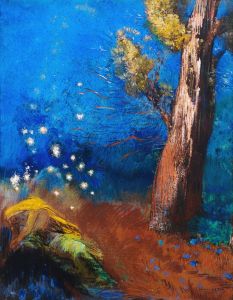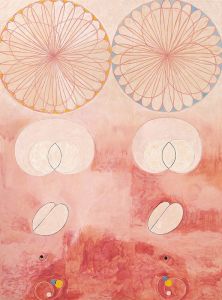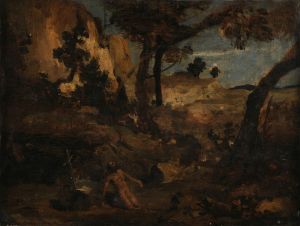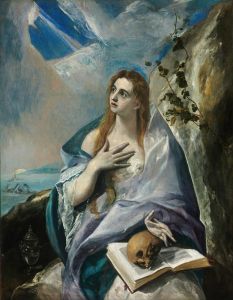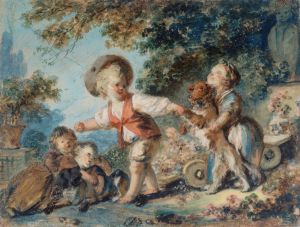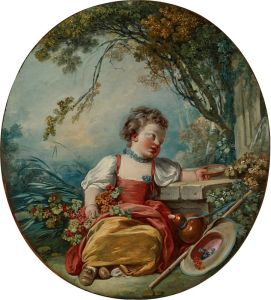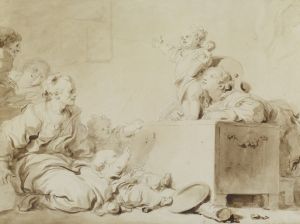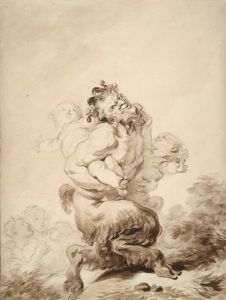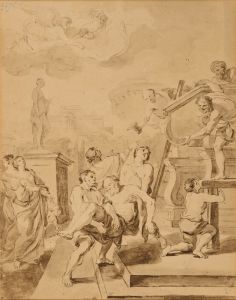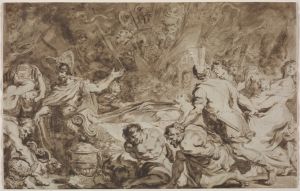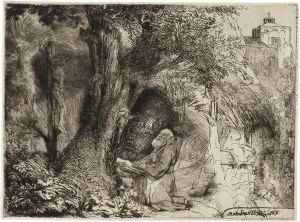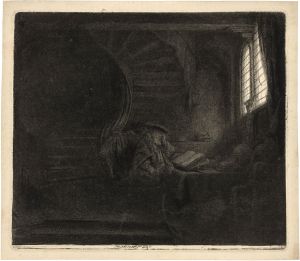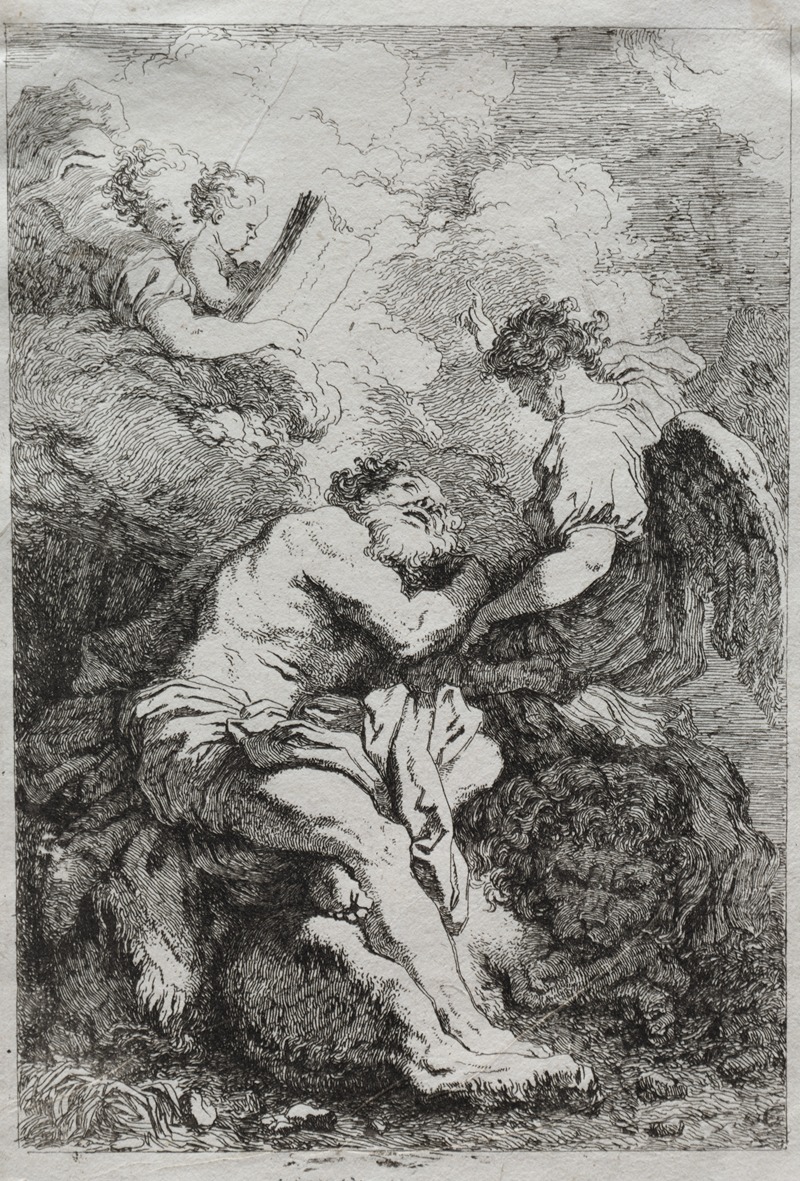
Saint Jerome
A hand-painted replica of Jean-Honoré Fragonard’s masterpiece Saint Jerome, meticulously crafted by professional artists to capture the true essence of the original. Each piece is created with museum-quality canvas and rare mineral pigments, carefully painted by experienced artists with delicate brushstrokes and rich, layered colors to perfectly recreate the texture of the original artwork. Unlike machine-printed reproductions, this hand-painted version brings the painting to life, infused with the artist’s emotions and skill in every stroke. Whether for personal collection or home decoration, it instantly elevates the artistic atmosphere of any space.
Jean-Honoré Fragonard, a prominent French painter of the Rococo era, is renowned for his exuberant and fluid style, often characterized by playful themes and vibrant colors. However, his oeuvre also includes works of a more serious and contemplative nature, such as his depiction of Saint Jerome. While Fragonard is best known for his light-hearted and romantic scenes, his painting of Saint Jerome showcases his versatility and ability to engage with more solemn and introspective subjects.
Saint Jerome, a revered Christian scholar and translator of the Bible into Latin (the Vulgate), is a popular subject in Western art. He is often depicted in a study or desert setting, reflecting his life as a hermit and scholar. In Fragonard's interpretation, the artist captures the essence of Saint Jerome's scholarly pursuits and ascetic lifestyle. Although specific details about Fragonard's painting of Saint Jerome are scarce, it is consistent with the traditional iconography associated with the saint.
Fragonard's depiction likely includes common elements found in other portrayals of Saint Jerome, such as the presence of a skull, a symbol of mortality and penance, and a book or scroll, representing his scholarly work. The saint is often shown in a contemplative pose, emphasizing his role as a thinker and theologian. Fragonard's skillful use of light and shadow would have enhanced the contemplative mood of the scene, drawing attention to the saint's introspective expression and the spiritual significance of his work.
The painting of Saint Jerome by Fragonard would have been created during a period when the artist was exploring a variety of themes and styles. While Fragonard is primarily associated with the Rococo movement, characterized by its ornate and decorative qualities, his work on religious subjects demonstrates his ability to adapt to different artistic demands. This versatility is a testament to Fragonard's technical skill and deep understanding of art history, allowing him to draw upon a wide range of influences and techniques.
Fragonard's Saint Jerome, like many of his other works, would have been appreciated for its dynamic composition and expressive brushwork. His ability to convey emotion and narrative through his paintings is evident in the way he captures the spiritual intensity of Saint Jerome's character. This work, though less well-known than his more playful pieces, contributes to the broader understanding of Fragonard's artistic range and the depth of his engagement with different subjects.
In summary, while detailed information about Jean-Honoré Fragonard's specific painting of Saint Jerome is limited, it is clear that the artist approached the subject with the same level of skill and sensitivity that characterizes his more famous works. His depiction of the saint reflects both his technical prowess and his ability to convey complex themes through art, offering a glimpse into the more contemplative side of his artistic repertoire.





